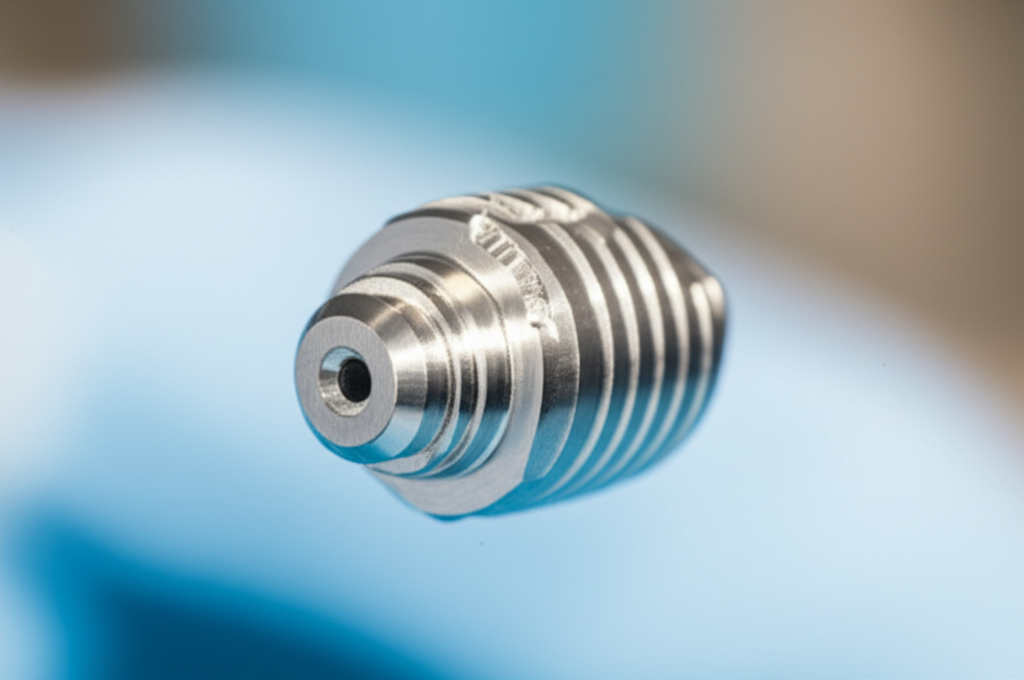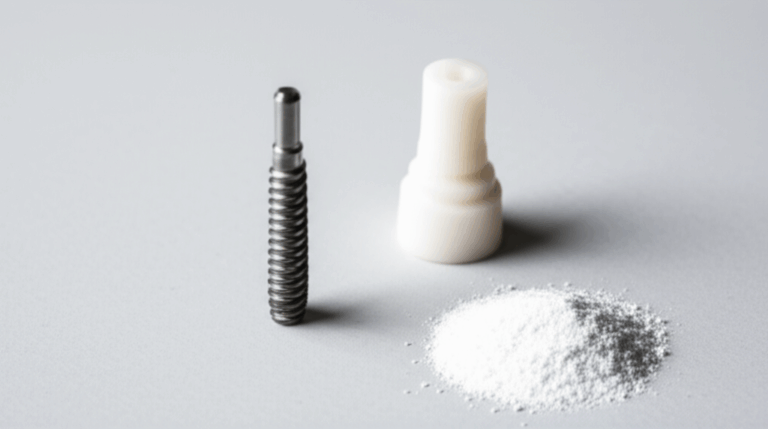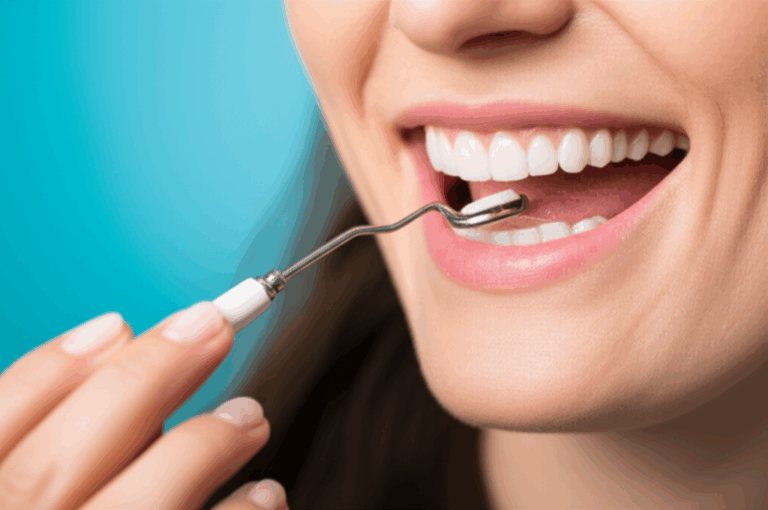
What is a Healing Cap on a Dental Implant? Your Complete Guide
If you’ve recently had a dental implant or you’re waiting to get one, you’ve probably heard the term “healing cap.” Don’t worry—you’re not alone if you’re confused! In this article, I’ll explain what a healing cap is, why it matters, and what you need to know for a healthy new smile. It’s worth reading because understanding this small piece of your dental puzzle can save you pain, time, and even money—and it puts you in control of your dental journey.
Table of Contents
What is a Healing Cap?
Let’s start from the beginning. A healing cap (also called a healing abutment) is a little piece of metal or ceramic that your dentist screws into your dental implant. Most times, it’s made from strong, safe stuff like titanium or zirconia—just like your implant.
The healing cap sits on top of your implant, sticking up just a bit over your gum. It’s not a fake tooth, and you won’t keep it forever—but it’s very important.
Think of the healing cap like a traffic cone for your gums. It tells your gum, “hey, heal around here!” By guiding the gum to heal the right way, it helps your final tooth look nice, feel good, and last a long time.
Why is the Healing Cap So Important?
Here’s the big problem with dental implants: After the dentist puts the metal post into your jawbone, the area has to heal just right. If the gum covers where the tooth should go, or if it doesn’t shape well, you can have real problems later.
Problems Without a Healing Cap
- Gum Tissue Grows Over: Without a healing cap, your gum might grow over the implant and cover it fully. If this happens, your dentist has to open the area again to keep working. That means you need another small surgery—not fun!
- Protection: While your bone is connecting with the implant (this is called “osseointegration”), the implant is fragile. It can pick up food or germs, which can slow down healing or even cause infection.
How the Healing Cap Helps
- Shapes the Gum: It’s like a mold for your gum, creating a nice, round base for your new tooth. Dentists call this the “emergence profile” — it just means the new tooth comes out of your gum in a good shape and looks real.
- Covers the Hole: With the cap there, the opening above your implant stays closed, making it less likely food, bits, and germs get inside and cause trouble.
- Makes the Next Steps Easier: When it’s time for the next step (like making a model or putting on your new tooth), the area is ready. There’s no need to cut the gum again.
Simply put, the healing cap teaches, protects, and guides your gums all at once.
How Does a Healing Cap Fit Into the Dental Implant Process?
Here’s a simple timeline for you:
| Stage | What Happens |
|---|---|
| 1. Implant Surgery | Dentist puts a titanium post (implant) into your jawbone. |
| 2. Healing Phase | Your bone grows onto the implant (osseointegration). |
| 3. Healing Cap Placement | The cap goes on to help your gum heal and protect the implant. |
| 4. Abutment & Crown Placement | The cap comes off, a connector goes on, then your dentist puts on your new tooth. |
Why Does This Matter?
The healing cap makes things go smoother. By shaping your gum early, you avoid problems. And when you’re ready for your new tooth, everything fits well, like a puzzle.
Healing Cap vs Cover Screw, Abutment, and Crown: What’s the Difference?
Dental implants have a few important parts. Each one has its job, and the names can be confusing.
Healing Cap vs Cover Screw
- Cover Screw: This small piece seals the implant under the gum after surgery. You won’t see it or feel it because it’s hidden by your gum.
- Healing Cap: After some months, your dentist takes the cover screw off and replaces it with the healing cap, which sticks out a bit above your gum.
Quick answer: The cover screw is for “hidden healing.” The healing cap shapes your gum for your new tooth.
Healing Cap vs Abutment
- Healing Cap: Used for a short time. Helps gum shape and protect the implant.
- Abutment: Used forever. It connects your new tooth to the implant.
Healing Cap vs Crown
- Healing Cap: Not for chewing! It’s just there to help healing.
- Crown: This is your new tooth. It’s made to look and act like a real tooth and can last many years.
If this seems like a lot, don’t worry. Each part helps you get a strong, healthy, and real-looking smile!
How and When is the Healing Cap Placed?
Let’s go through what you might see at the dentist.
One-Stage or Immediate Placement
Sometimes, your dentist puts the healing cap on right after placing the implant—this is called “one-stage” or “immediate” healing. In this case, you’ll see the cap when you leave the office.
Two-Stage or Delayed Placement
Other times, after the implant is inside, the dentist closes up your gum so it heals quietly. A few months later, they make a small opening and put the healing cap on. This is the “two-stage” way.
What’s the Appointment Like?
- You get numbing medicine (so you don’t feel pain).
- The dentist gently screws the healing cap into your implant.
- No drilling, no big tools. It’s a quick visit, and most people say it’s easier than a filling.
Tip: Getting a healing cap is one of the easiest steps in an implant. Most folks go back to their day right after.
What Happens While You Have a Healing Cap?
The healing cap usually stays in for a few weeks or a couple of months. Here’s what’s happening:
The Bone is Connecting (Osseointegration)
Your jawbone grows onto the implant, making it strong. This connection lets your implant act just like a real tooth root.
Your Gums are Healing
The gum tissue is fixing around the cap, shaping itself like your natural teeth. This is how your new tooth will “grow” out of your gum naturally and not look fake.
Getting Ready for the Next Step
When healing is done, your dentist simply removes the cap, makes a model for your crown, and keeps you moving forward.
What Types of Healing Caps are There?
There isn’t just one type. The healing cap your dentist picks depends on you.
Material
- Titanium: Very strong, light, and loved by gums.
- Zirconia: White, more like ceramic, good for people who want no metal.
Shape and Size
- Round or Flared: Different shapes help make the gum fit nicely.
- Narrow or Wide: Depending on how thick or thin your gums are.
Regular vs Custom
- Regular Healing Caps: Pre-made, fine for most people.
- Custom Healing Caps: Made just for you if your gums need special care.
Dentists and their lab buddies know how to choose what works best for your mouth.
How Do You Take Care of a Healing Cap?
You want your gums to heal well and your implant to last. Taking care of your healing cap is super important.
Keeping Things Clean
- Brush gently around the healing cap. Use a soft toothbrush.
- Your dentist may give you a special mouth rinse—like chlorhexidine—to help keep germs away.
- You can use a water flosser, just on the gentle setting.
Eating and Drinking
- Soft foods for a few days: yogurt, eggs, pasta, cooked veggies, smoothies are all good.
- Don’t eat hard, crunchy, or sticky things—no popcorn or hard candy!
Things Not to Do
- Don’t smoke—smoking slows healing and can make your implant fail.
- Don’t mess with the cap using your tongue or fingers.
- Don’t drink very hot liquids for a few days.
When to Call Your Dentist
- If the healing cap feels loose or falls out.
- If you see pus or get a fever (this might mean infection).
- If your gum starts to grow over the cap.
If you take care of your healing cap, chances are good you’ll heal with no problems!
What Could Go Wrong? When Should You Call the Dentist?
Most people get through this part just fine, but sometimes things happen.
Small Problems
- A little swelling or redness: Normal for a couple days. Put a cold pack on and take some pain medicine if it helps.
- A little bleeding: Should stop quickly. Don’t rinse too hard.
Bigger Problems
- Loose or Falling Off: If you can move the cap or it falls out, call your dentist soon. You don’t want gum or germs getting inside. It’s rare but needs to be fixed quickly.
- Ongoing or Strong Pain: Some pressure is okay at first, but sharp or long-lasting pain is not.
- Signs of Infection: Pus, fever, spreading swelling, or a bad taste means it’s time to call.
What If Your Gums Grow Over the Cap?
- Sometimes, your gum heals too fast and starts to cover the cap. Dentists fix this in a quick, simple visit.
Don’t try to mess with or tighten the cap by yourself—let the dentist handle it!
What’s Next After the Healing Cap?
Your dentist will tell you when it’s time for the next part. Here’s what usually happens:
And that’s it—after a little patience and simple care, your smile comes back even better than before!
Bullet Point Summary: Key Facts About Healing Caps
- A healing cap helps your gum heal and shape around your dental implant.
- It protects the implant from germs, food, and getting hurt while you heal.
- Healing caps are safe and made from strong materials like titanium and zirconia.
- You might get your healing cap placed during your first surgery or at another visit, based on your plan.
- Good care—gentle brushing, soft foods, and watching for issues—helps healing go well and fast.
- The healing cap is not your real tooth! It’s a temporary but important step on your way to a new, strong smile.
- If your cap feels loose, falls out, or your gums look odd, call your dentist.
- Most people just feel a little sore at first. Full healing takes a few weeks to a few months.
References
- International Journal of Periodontics & Restorative Dentistry. “Soft Tissue Management Around Dental Implants,” 2021.
- Journal of Clinical Periodontology. “Peri-Implantitis: Risk Factors and Prevention,” 2019.
- Dental Research Journal. “Patient Experiences with Dental Implant Healing Caps,” 2022.
- Clinical Implant Dentistry and Related Research. “Osseointegration Periods for Dental Implants,” 2018.
With the right care and a bit of time, your dental implant—and its important healing cap—can set you up for strong, healthy, and happy smiles for years to come.








